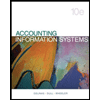
1.
Introduction: Throughput time is the total time required for the completion of a process. For instance, the time required to manufacture machinery from the beginning till its end is the throughput time. The throughput time comprises process time, inspection time, move time, and queue time. Wait time is not a part of throughput time.
The throughput time.
2.
Introduction: The manufacturing cycle refers to the amount of time in the manufacturing process that is spent on enriching or improving the product. It is the time taken by an organization to convert raw material into finished goods. Manufacturing cycle time includes material movement time, loading time, idle waiting time, machining and assembly time, inspection time, and so on.
The manufacturing cycle efficiency for the given quarter.
3.
Introduction: Throughput time is the elapsed time from the time of inception of the production process till the goods are dispatched to the customer. The throughput time is made up of four elements. It is the total of process time, inspection time, move time, and queue time.
The percentage of throughput time spent in activities that are non-value added.
4.
Introduction: Delivery cycle time is the total time required to produce as well as deliver the product to the customers. The elapsed time from the procurement of a client order until the final product is dispatched is the delivery cycle time.
The delivery cycle time.
5.
Introduction: The manufacturing cycle refers to the amount of time in the manufacturing process that is spent on enriching or improving the product. It is the time taken by an organization in order to convert raw material into finished goods. Manufacturing cycle time includes material movement time, loading time, idle waiting time, machining and assembly time, inspection time, and so on.
The new MCE if by using Lean Production the queue time of production is eliminated.
Want to see the full answer?
Check out a sample textbook solution
Chapter 12 Solutions
CONNECT ONLINE ACCESS F/MANAGERIAL ACC.
- Can you help me solve this general accounting question using valid accounting techniques?arrow_forwardMerchandise is soldon account to a customer for $82,500, terms GEB shipping point, 3/10, n/30. The seller paid the freight of $6,300. Determine the amount of the sale.arrow_forwardCan you guide me through solving this financial accounting problem using proper techniques?arrow_forward
- Accounting solution and questionarrow_forwardI need help finding the accurate solution to this financial accounting problem with valid methodsarrow_forwardUzo Haulers Co. is a company that manufactures industrial trucks. During the year, Uzo purchased $1,200,000 of direct materials and placed $1,275,000 worth of direct materials into production. Uzo’s beginning balance in the Materials Inventory account was $310,000. What is the ending balance in Uzo’s Materials Inventory account?arrow_forward
- Please provide the accurate answer to this general accounting problem using appropriate methods.arrow_forwardAccurate Value Hardware began in 2019 with a credit balance of $87,000in the allowance for sales returns account. Sales and cash collections from customers during the year were $963,000 and $715,000, respectively. Accurate Value estimates that 7.5% of all sales will be returned. In 2019, customers returned merchandise for a credit of $36,000 to their accounts. Accurate Value's 2019 income statement would report net sales of__.arrow_forwardThe financial statements of Sunland Manufacturing Company report net sales of $1277500 and accounts receivable of $71000 and $69000 at the beginning and end of the year, respectively. What is the average collection period for accounts receivable in days?arrow_forward
 Pkg Acc Infor Systems MS VISIO CDFinanceISBN:9781133935940Author:Ulric J. GelinasPublisher:CENGAGE L
Pkg Acc Infor Systems MS VISIO CDFinanceISBN:9781133935940Author:Ulric J. GelinasPublisher:CENGAGE L Managerial AccountingAccountingISBN:9781337912020Author:Carl Warren, Ph.d. Cma William B. TaylerPublisher:South-Western College Pub
Managerial AccountingAccountingISBN:9781337912020Author:Carl Warren, Ph.d. Cma William B. TaylerPublisher:South-Western College Pub Managerial Accounting: The Cornerstone of Busines...AccountingISBN:9781337115773Author:Maryanne M. Mowen, Don R. Hansen, Dan L. HeitgerPublisher:Cengage Learning
Managerial Accounting: The Cornerstone of Busines...AccountingISBN:9781337115773Author:Maryanne M. Mowen, Don R. Hansen, Dan L. HeitgerPublisher:Cengage Learning


